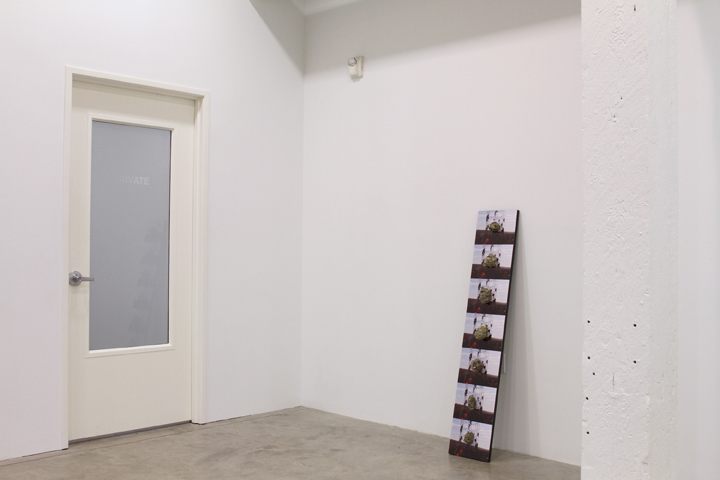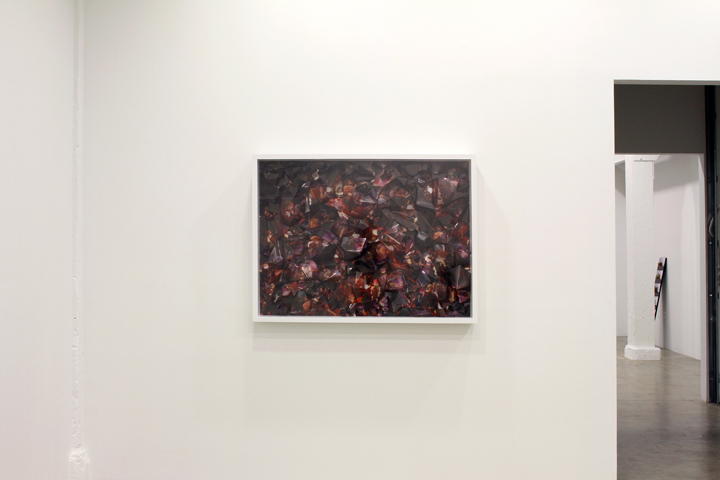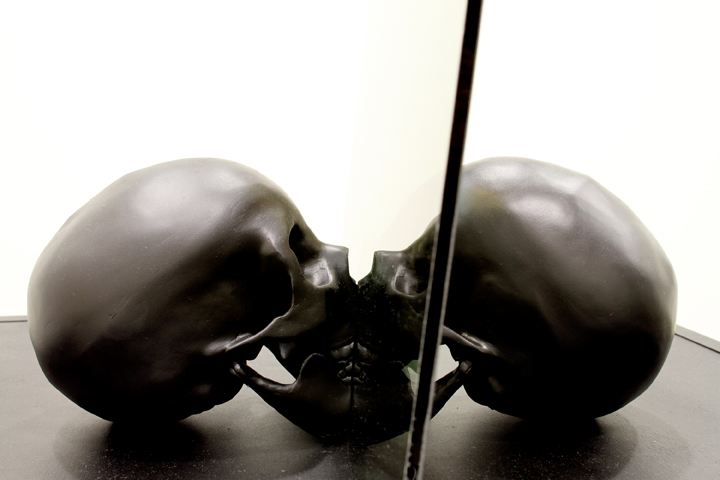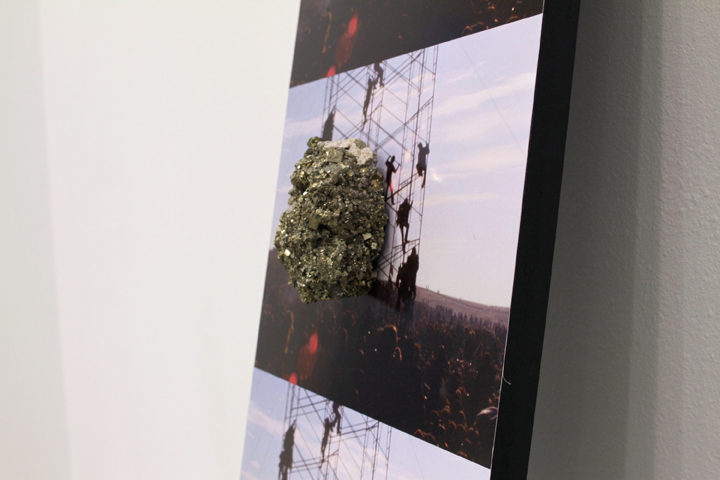








Mike Bray
It was never about the audience
September 3–October 16, 2010
Mike Bray’s new videos, photographs and sculptures continue his investigations into a self-inflicted cinematic space. Bray recontextualizes time, frame by frame, collapsing and expanding the spectacle through the idiom of cinema. In It was never about the audience, the 1970 Rolling Stones documentary Gimme Shelter acts as the material from which Bray pulls both his conceptual and visual landscape.
Mike Bray is the Co-Founder of Ditch Projects, an artist-run studio, installation and performance space located in downtown Springfield, Oregon. He has exhibited at Soil Gallery, Seattle; Crawl Space, Seattle; The Art Gym at Marylhurst University; and Portland State University. Bray currently lives in Eugene, Oregon, where he teaches at the University of Oregon. Bray's exhibition coincides with the completion of the gallery's yearlong collaboration with writer John Motley.
As part of a continued commitment to fostering vital discourse surrounding contemporary art, Fourteen30 Contemporary commissioned Motley to produce a critical essay for each gallery exhibition from September 2009–September 2010. A book of the resulting eight essays will release this fall, in celebration of Fourteen30 Contemporary’s two-year anniversary. In an excerpt from his essay on Bray’s work, Motley writes:
“Picking up this ‘slack’ between the real and the represented occupies a central place in Bray’s work, in which he pulls the landscapes of filmic texts into the less well-lighted stages of the real world. The films that form the material basis of his art are obsessively studied, but not for narrative revelation. Instead, he zooms in on technical conventions, those formal aspects unique to the media that arbitrate the audience’s viewing experience and conspire to depict a believably life-like world. When these conventions break down or fail to appear, when the world represented onscreen cops to its own construction, it foregrounds our escapist desires as viewers to suspend disbelief.”
It was never about the audience
September 3–October 16, 2010
Mike Bray’s new videos, photographs and sculptures continue his investigations into a self-inflicted cinematic space. Bray recontextualizes time, frame by frame, collapsing and expanding the spectacle through the idiom of cinema. In It was never about the audience, the 1970 Rolling Stones documentary Gimme Shelter acts as the material from which Bray pulls both his conceptual and visual landscape.
Mike Bray is the Co-Founder of Ditch Projects, an artist-run studio, installation and performance space located in downtown Springfield, Oregon. He has exhibited at Soil Gallery, Seattle; Crawl Space, Seattle; The Art Gym at Marylhurst University; and Portland State University. Bray currently lives in Eugene, Oregon, where he teaches at the University of Oregon. Bray's exhibition coincides with the completion of the gallery's yearlong collaboration with writer John Motley.
As part of a continued commitment to fostering vital discourse surrounding contemporary art, Fourteen30 Contemporary commissioned Motley to produce a critical essay for each gallery exhibition from September 2009–September 2010. A book of the resulting eight essays will release this fall, in celebration of Fourteen30 Contemporary’s two-year anniversary. In an excerpt from his essay on Bray’s work, Motley writes:
“Picking up this ‘slack’ between the real and the represented occupies a central place in Bray’s work, in which he pulls the landscapes of filmic texts into the less well-lighted stages of the real world. The films that form the material basis of his art are obsessively studied, but not for narrative revelation. Instead, he zooms in on technical conventions, those formal aspects unique to the media that arbitrate the audience’s viewing experience and conspire to depict a believably life-like world. When these conventions break down or fail to appear, when the world represented onscreen cops to its own construction, it foregrounds our escapist desires as viewers to suspend disbelief.”